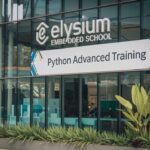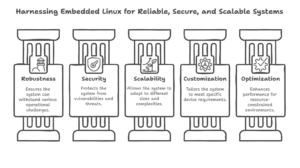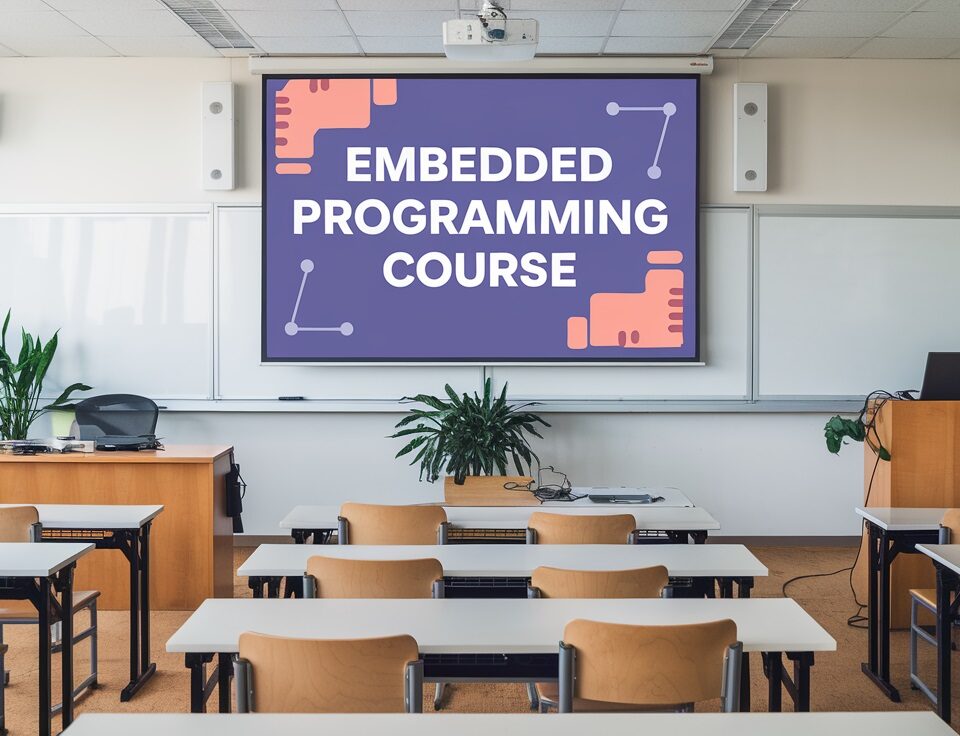
No.1 Certified Raspberry Pi Training course in madurai – 2025
March 17, 2025
Best Python Training Institutes Nearby 2025 | Kickstart Your Career with Expert Training, Certification & Job Support. Enroll Now!
March 25, 2025Embedded Linux plays a crucial role in modern electronics, powering devices ranging from IoT gadgets to automobiles, medical systems, and much more. As an open-source operating system, Linux provides unparalleled flexibility, stability, and cost-effectiveness for embedded systems. If you are interested in mastering embedded systems with Linux, taking a Best Embedded Linux Course can be a highly valuable investment. This blog will guide you through the key aspects of an embedded Linux course, the skills you will gain, and why it’s a wise choice for aspiring developers and engineers.
Embedded Linux plays a crucial role in modern electronics, powering devices ranging from IoT gadgets to automobiles, medical systems, and much more. As an open-source operating system, Linux provides unparalleled flexibility, stability, and cost-effectiveness for embedded systems. If you are interested in mastering embedded systems with Linux, taking the Best Embedded Linux Course can be a highly valuable investment. This blog will guide you through the key aspects of an embedded Linux course, the skills you will gain, and why it’s a wise choice for aspiring developers and engineers.
The Best Embedded Linux Course offers deep insights into the Linux kernel, device drivers, bootloaders, and real-time processing—equipping learners to build efficient and stable embedded applications. Through hands-on modules and industry-aligned projects, students can explore practical implementations used in smart devices, industrial control systems, and connected technologies. A strong foundation in the Best Embedded Linux Course also enhances your ability to troubleshoot, optimize, and scale embedded solutions with high performance and minimal resource usage.
Whether you’re a student looking to specialize in embedded development or a working professional aiming to shift into the embedded domain, enrolling in the Best Embedded Linux Course provides a clear competitive edge. This course not only teaches the core concepts of Linux but also integrates them with real-world hardware like ARM-based boards, BeagleBone, or Raspberry Pi. By completing the Best Embedded Linux Course, you position yourself as a valuable asset in industries that rely on reliable, low-level system programming and open-source technologies.
Table of Contents
What is an Embedded Linux System?
Embedded systems are specialized computing devices designed to perform dedicated tasks. They are commonly used in products like smart home devices, automobiles, medical devices, security systems, and consumer electronics. Embedded Linux refers to a version of the Linux operating system that is customized to work on these resource-constrained devices.
Linux is known for its robustness, security, and scalability, which are key reasons why it is widely used in embedded systems. Linux can be customized to fit the needs of specific devices, allowing developers to optimize performance and ensure reliability in various environments. Whether you’re working on a device with limited memory and processing power or need real-time performance, Embedded Linux is an excellent choice.

Best Embedded Linux Course
Why Linux is Ideal for Embedded Systems
Embedded Linux refers to a customized version of the Linux operating system designed specifically for embedded devices. Unlike desktop versions of Linux, Embedded Linux is trimmed down to include only what is necessary for the application, making it lightweight, secure, and highly adaptable. Linux’s open-source nature and modular structure enable developers to tailor it to meet the exact requirements of the hardware and application.
Students pursuing the Best Embedded Linux Course gain hands-on experience in configuring and building Linux for embedded devices. Through practical lab work, they learn how to work with real-time operating systems, optimize bootloaders, and integrate device drivers—skills that are essential for any modern embedded system developer.
Key Advantages of Learning Embedded Linux
The increasing demand for connected and intelligent systems has made Embedded Linux a vital skill for engineers and developers. Linux supports a wide variety of architectures and platforms, making it ideal for use in IoT applications, smart vehicles, and industrial automation. Its reliability, long-term support, and large development community further reinforce its position as the leading OS for embedded systems.
Enrolling in the Best Embedded Linux Course empowers learners with in-depth knowledge of the Linux kernel, shell scripting, cross-compilation, and board support packages (BSPs). These are not only theoretical concepts—they are applied through real-time projects that simulate challenges engineers face in professional settings.
Build Your Future with the Best Embedded Linux Course
Understanding how to work with Embedded Linux is more than a technical skill—it’s a career asset. Whether you are a student, IT professional, or electronics engineer, taking the Best Embedded Linux Course gives you access to a growing market filled with high-paying job opportunities and innovation-driven roles. You’ll learn how to develop secure, scalable, and high-performance systems that meet real-world demands.
If you’re looking to master this field, enrolling in the Best Embedded Linux Course at Elysium Embedded School ensures a strong start. With expert faculty, modern lab facilities, and industry-recognized certification, this program delivers the knowledge and hands-on expertise needed to stand out in today’s competitive embedded systems job market.
Why Take a Best Embedded Linux Course?
A Best Embedded Linux Course is essential for those looking to develop embedded systems based on Linux. The course will provide a structured and comprehensive approach to mastering the skills required for embedded Linux development. Here are some reasons why taking a course is beneficial:
-
Comprehensive Learning Path
A structured course will cover everything from basic Linux concepts to advanced embedded system techniques, providing a complete roadmap for your learning. You will start with foundational knowledge and gradually move toward more complex topics like real-time Linux, cross-compilation, and custom kernel development.
-
Real-World Applications
Embedded Linux is used in a wide variety of industries, including automotive, healthcare, consumer electronics, and industrial automation. By taking a Best Embedded Linux Course, you will gain the skills needed to work on real-world projects and contribute to the development of cutting-edge products.
-
Hands-On Experience
Most courses provide hands-on learning through practical projects. You will work with real embedded Linux hardware (such as Raspberry Pi, BeagleBone, or other development boards) to develop your skills and build a portfolio of projects that demonstrate your expertise.
-
Career Opportunities
The demand for embedded systems engineers is growing, particularly those with expertise in Linux. Companies in industries like IoT, automotive, and telecommunications are looking for skilled engineers to work on their embedded Linux projects. Completing a course can significantly improve your career prospects.
-
Open-Source and Customization
Embedded Linux is based on open-source software, which means you can access and modify the source code to tailor it to your specific needs. A course will teach you how to configure the Linux kernel, write device drivers, and optimize your system for performance.
What You Will Learn in a Best Embedded Linux Course
A Best Embedded Linux Course is designed to equip you with all the skills required to develop embedded systems using Linux. Here’s a breakdown of the core topics that are typically covered:
-
Linux Fundamentals
Before diving into embedded Linux, it’s essential to understand the core concepts of the Linux operating system:
- Linux Command Line: You will learn to work with the Linux terminal, including basic file management, process control, and system administration commands.
- File System Structure: Learn how Linux organizes files and directories and understand file permissions and ownership.
- Package Management: You’ll learn how to manage software packages using tools like APT, YUM, and RPM.
-
Linux Kernel and Customization
The Linux kernel is at the heart of any Linux-based system. In a Best Embedded Linux Course, you’ll learn how to configure and compile the Linux kernel for embedded devices:
- Kernel Configuration: You will learn how to configure the kernel to support the hardware of your embedded system.
- Kernel Compilation: Learn how to compile a custom kernel for embedded devices, stripping away unnecessary components to optimize the system.
- Device Drivers: You will understand how device drivers interact with the Linux kernel and how to write or modify drivers for embedded hardware.
-
Cross-Compilation
Embedded systems often run on architectures different from those of standard PCs. Cross-compilation allows you to build software on a host machine and run it on the target embedded hardware.
- Cross-Compiling Toolchains: You will learn how to set up cross-compilation toolchains to build software for different architectures (e.g., ARM).
- Compiling and Deploying Applications: Understand how to compile applications for embedded Linux systems and deploy them on the target device.
-
Embedded Linux Build Systems
To build a custom embedded Linux distribution, you’ll need to work with specialized build systems:
- Yocto Project: Yocto is an open-source project that provides a framework for creating custom Linux distributions. You’ll learn how to set up Yocto to build tailored Linux images for embedded devices.
- Buildroot: Another popular tool, Buildroot is used to generate minimal Linux systems for embedded devices. You will learn how to use Buildroot to build and deploy lightweight Linux images.
-
Networking and IoT
Networking is a critical part of many embedded Linux applications, particularly in IoT devices. You will learn:
- Networking Protocols: Set up networking interfaces and configure protocols like TCP/IP, UDP, and HTTP for communication between embedded devices.
- IoT Connectivity: Learn how to connect embedded systems to IoT networks using Wi-Fi, Bluetooth, Zigbee, and other wireless protocols.
-
Security in Embedded Linux
Security is essential when building embedded systems, especially those that deal with sensitive data or interact with external networks. The course will cover:
- Secure Boot: Learn how to ensure your embedded system only boots from trusted sources to prevent malware and unauthorized access.
- Encryption: Understand how to implement encryption for secure communication and data storage.
- Security Hardening: Learn strategies to protect your embedded Linux system from potential vulnerabilities.
-
Real-Time Embedded Linux
Real-time systems are essential for applications that require deterministic timing, such as industrial control systems and robotics.
- Real-Time Linux: Learn how to configure and use real-time variants of Linux, such as PREEMPT-RT or RTLinux, to meet real-time requirements.
- Real-Time Scheduling: Understand the mechanisms of real-time scheduling to ensure tasks are executed within specified time limits.
Certainly! Here’s the same content broken into separate sections with clear headings, using the keyword “Best Embedded Linux Course” strategically:
Real-World Application Through Practical Training
One of the key strengths of the Best Embedded Linux Course is its emphasis on real-world application. Rather than focusing solely on theoretical concepts, this course immerses learners in a practical development environment. Students gain hands-on experience in building, configuring, and deploying embedded Linux systems from scratch. By working on real hardware platforms such as ARM-based boards, BeagleBone, or Raspberry Pi, learners develop critical skills like kernel customization, root file system creation, and bootloader configuration. These are essential abilities that every embedded Linux developer must master.
Industry-Focused Troubleshooting and Debugging Skills
Another valuable component of the Best Embedded Linux Course is the focus on debugging and troubleshooting—skills often overlooked in traditional training. The course teaches students how to diagnose and solve issues that arise during embedded system development, including driver conflicts, system crashes, and performance bottlenecks. These capabilities are critical in high-stakes industries like automotive, consumer electronics, and telecom, where embedded systems must perform flawlessly under demanding conditions. By completing the Best Embedded Linux Course, learners are prepared to manage the full development lifecycle of embedded products—from system architecture and coding to real-time deployment and optimization.
Certainly! Here’s a new section with a heading, written in the same tone and incorporating the keyword “Best Embedded Linux Course”:
Career Growth After Completing the Best Embedded Linux Course
Completing the Best Embedded Linux Course opens up numerous high-potential career opportunities in today’s rapidly evolving tech landscape. As embedded systems continue to power smart devices, automotive systems, industrial automation, and medical technologies, the demand for skilled professionals with Linux expertise is steadily increasing. By mastering skills like kernel development, device driver integration, and real-time system design, learners position themselves for roles such as Embedded Linux Developer, Firmware Engineer, IoT System Designer, or Linux System Programmer.
The Best Embedded Linux Course not only strengthens your technical portfolio but also provides the practical experience employers seek. With embedded Linux powering mission-critical systems worldwide, companies are actively hiring candidates who can confidently work with customized Linux environments. Whether you’re entering the job market or transitioning from another domain, this course acts as a strong launchpad toward a rewarding and future-proof tech career.
FAQs about Best Embedded Linux Course
- What are the prerequisites for taking a Best Embedded Linux Course?
While there are no strict prerequisites, it’s helpful to have:
- Basic knowledge of Linux: Understanding the command line and basic Linux concepts will be beneficial.
- Programming skills: Familiarity with C or C++ will make it easier to work with device drivers and system-level programming.
- Basic hardware knowledge: Knowing how embedded systems and hardware components work will make the learning process smoother.
- Can I take the Best Embedded Linux Course without prior experience in embedded systems?
Yes, many Best Embedded Linux Courses are designed for beginners. You’ll start with foundational concepts and gradually move to more complex topics. If you’re new to embedded systems, it might take some time to get up to speed, but a well-structured course will guide you through the learning process.
- How long does it take to complete a Best Embedded Linux Course?
The duration of the course depends on its structure and your prior experience. Typically, a Best Embedded Linux Course takes around 6 to 12 weeks if pursued full-time. If you opt for a self-paced course, it may take longer based on how much time you can dedicate to the learning process.
- What are the career prospects after completing a Best Embedded Linux Course?
Graduates of an Embedded Linux Course can pursue careers in:
- IoT development
- Embedded systems engineering
- Automotive systems development
- Healthcare and medical device development
- Robotics and automation
The demand for engineers skilled in Embedded Linux is expected to grow, making this course a great investment for future career opportunities.
- What tools and platforms will I use during the course?
In a Best Embedded Linux Course, you’ll use various development tools and platforms:
- Raspberry Pi or BeagleBone for hands-on experience with embedded hardware.
- Yocto and Buildroot for creating custom embedded Linux distributions.
- GCC for cross-compiling applications.
- GDB and Valgrind for debugging and profiling embedded applications.
Certainly! Here’s an improved and expanded version of your conclusion, written with clarity and enriched with keywords like Best Embedded Linux Course and relevant phrases for better engagement and SEO:
Conclusion
Taking the Best Embedded Linux Course in 2025 offered by Elysium Embedded School is a strategic decision for anyone aspiring to excel in the field of embedded systems. Whether you are a student beginning your technical journey or a seasoned developer looking to expand your expertise, this course offers a structured path to mastering both the theoretical and practical aspects of embedded Linux. With a strong focus on real-time performance, kernel-level programming, and hardware integration, you’ll gain the essential skills required to thrive in today’s embedded technology landscape.
The Best Embedded Linux Course equips you with the ability to build secure, scalable, and efficient embedded applications across multiple industries. From smart home devices and industrial automation to automotive electronics and medical equipment, the knowledge gained through this course is highly applicable and in demand. The hands-on approach, use of real development boards, and exposure to open-source tools ensure that you’re not just learning, but applying your skills to solve real-world problems.
By choosing Elysium Embedded School for your training, you benefit from expert mentorship, personalized guidance, and industry-aligned curriculum. The school’s commitment to excellence ensures that learners are job-ready and equipped to meet evolving technology demands. Completing the Best Embedded Linux Course is more than just an academic achievement—it’s your gateway to high-impact careers and long-term success in embedded system development. Step into the future with confidence and start building the next generation of intelligent, Linux-powered devices.






